
| WWT Shows | CLICK TO: Join and Support Internet Horology Club 185™ | IHC185™ Forums |

|
• Check Out Our... • • TWO Book Offer! • |
Welcome Aboard IHC185™  Internet Horology Club 185
Internet Horology Club 185  IHC185™ Discussion Site Main Page
IHC185™ Discussion Site Main Page  Horological Discussions, Questions and Answers
Horological Discussions, Questions and Answers  Clocks, Including 400-Day Discussions
Clocks, Including 400-Day Discussions  Help with case corosion
Help with case corosion
 Internet Horology Club 185
Internet Horology Club 185  IHC185™ Discussion Site Main Page
IHC185™ Discussion Site Main Page  Horological Discussions, Questions and Answers
Horological Discussions, Questions and Answers  Clocks, Including 400-Day Discussions
Clocks, Including 400-Day Discussions  Help with case corosion
Help with case corosionGo  | New Topic  | Find-Or-Search  | Notify  | Tools  | Reply to Post  |  |
I have two clocks that my brother-in-law brought back from England when he was stationed there in the '70s. The first I guess is English, but don't know. It is cased in a heavy black stone, maybe slate? 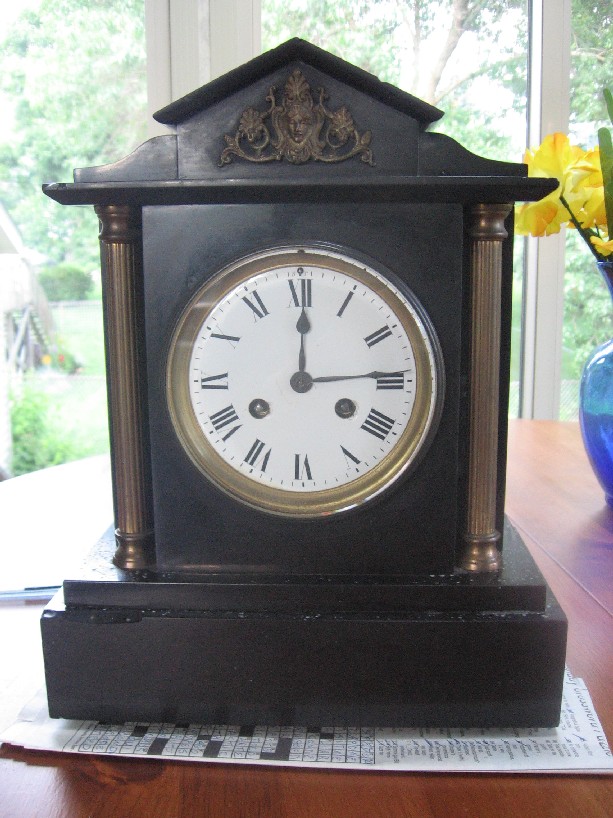 | |||
|
Here is the back. 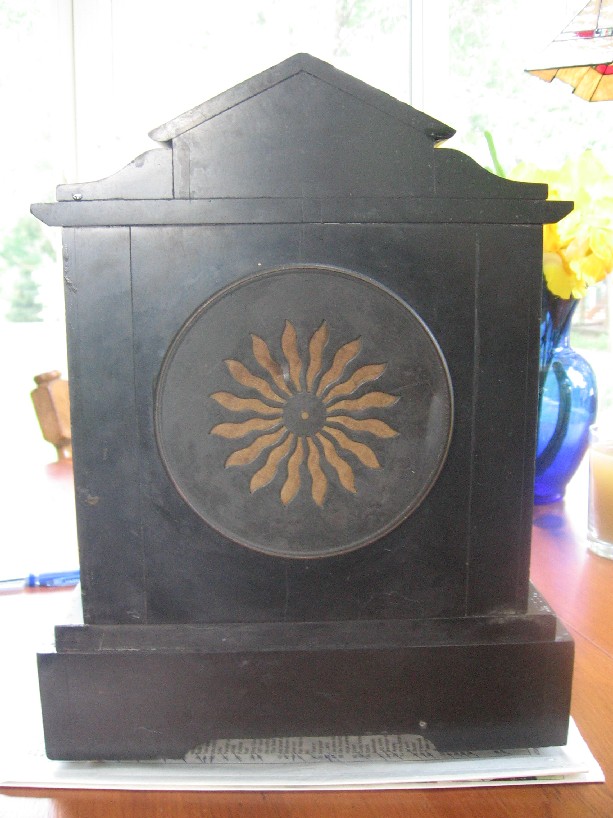 | ||||
|
Here is the clockworks.  | ||||
|
Here is the problem. I guess this must be fungus growing on the top.  | ||||
|
The other is an Ansonia. It is made of similar stuff as the "Englisn" clock. 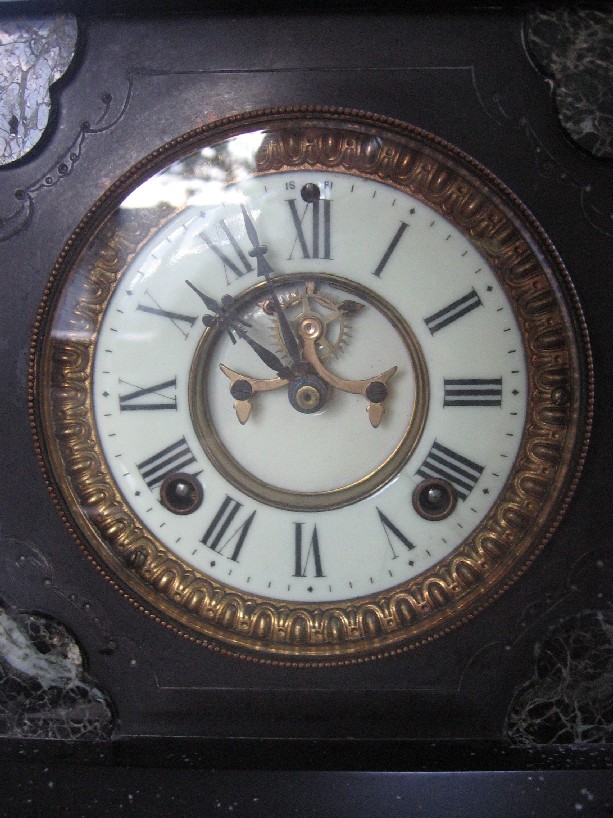 | ||||
|
Here is the front. It has a nice open escapement. 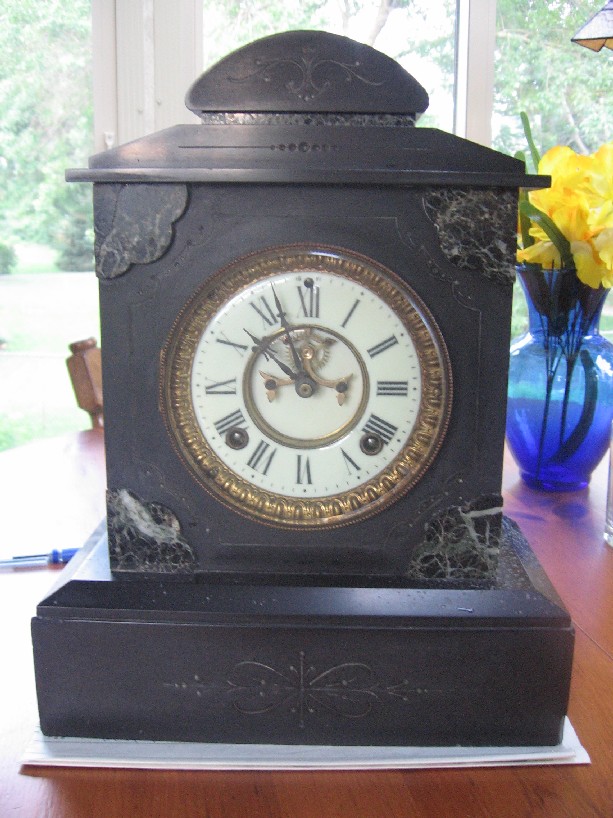 | ||||
|
Here is the Ansonia back. 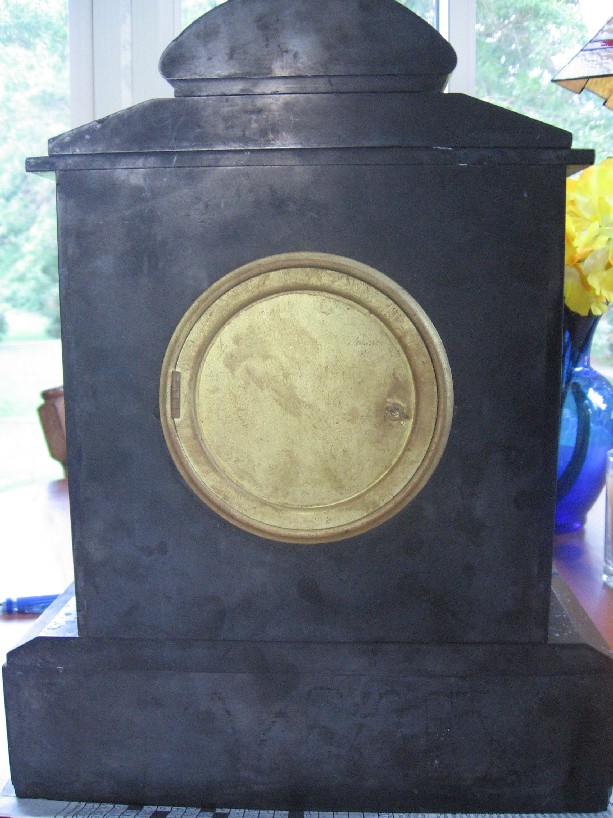 | ||||
|
Here is the Ansonia clockworks. 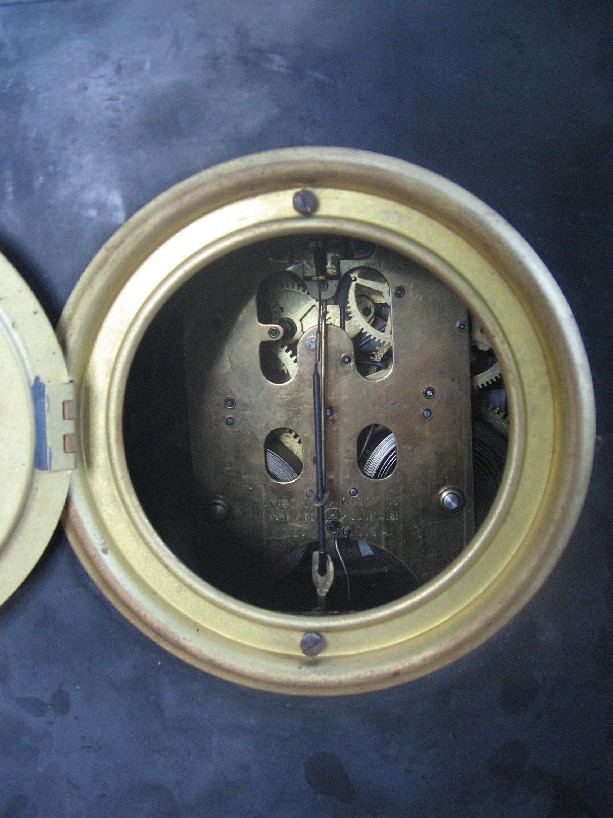 | ||||
|
The intrusion to the case surface is not as bad on this one as it is on the English clock. I would rather not use something abrasive like steel wool if I can help it. Can anyone tell me what this is and how to get rid of it? Thanks, Steve Gossard 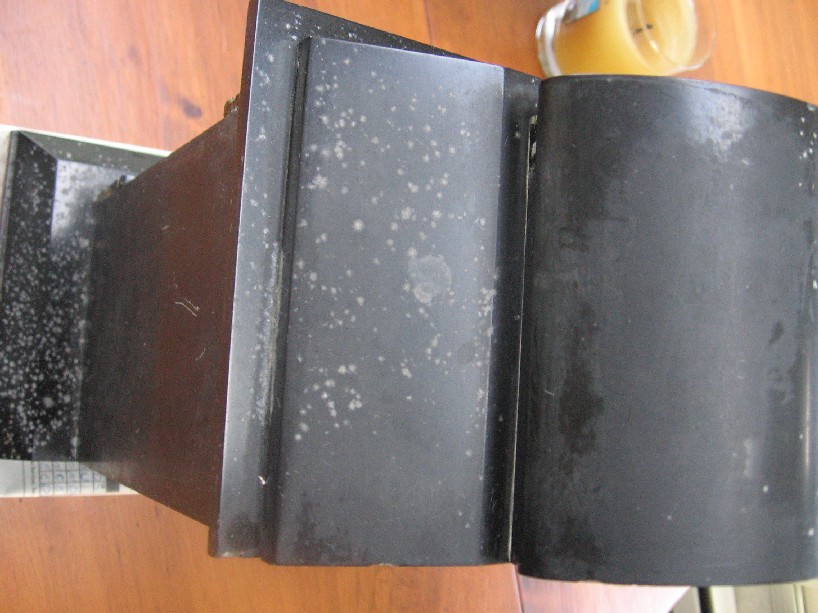 | ||||
|
On cl;oser examination, the "English" clock is "made in France." It is stamped "Etienne Makant Brevet." | ||||
|
Steve, Nice examples of Slate clocks! Most of these clocks in the UK have French movements in them! I think the slate used is also known as Belgian slate, coming from slate mines in the area. They were typically Victorian era, also being Black, known as 'Mourning Clocks, and were in vogue during the Queen Victoria's long period of mourning following the death of Prince Albert. Unfortunately, this sort of damage is Very common on this type case, and abrasives are the only way you'll totally get rid of it. Usually caused by damp, water splashes and acids in the atmosphere from coal fires - these clocks were often placed on the mantlepiece directly over the fire! The water/acid attacks on the slate have actually removed the colour from the slate and taken it back locally to its natural state! The marks will also be small 'pits' in the polish, which you'll have to get to the bottom of before you can start getting the polish back. Polishing them is also a long, tedious dirty job, but the results are worth it. An alternative is to clean up the case with soap and water, dry it off thoroughly, then use a renovator liquid. I still have a bottle of 'Black Slate Renovator' (surprise surprise!) by 'House of Harbru' which is good, but I think this company (in Rotherham UK) has gone out of business. There are similar products on the market, so some dedicated 'Googling' or eBay searches for black slate renovators etc should bring up a few results. I think one product is called 'Back to Black'. Whatever you do Don't use a silicon based product for polishing them! To do the best job, the cases really need to be dismantled - in some instances, this is quite easy, they fall apart eventually anyway as the cement fails! Otherwise, strip very carefully! If you don't dismantle the cases to actually polish them, you will inevitably have 'rubbing' lines along all the recessed edges which you can't otherwise get into! Best regards John | ||||
|
| Administrative Assistant |
John, Thank you for your very informative response! Debbie | |||
|
Thanks Debbie, I tried to add some more but my connection fell over during the upload and vanished! Oh well ........... To add a bit more, the damage to the front top edge of the base, could be disguised by forming a bevel all around the edge - this can be polished during the main casework! Bevels and other ornate work were common on these, so if done carefully, no reason why it shouldn't appear original! Re the Ansonia, the slate case is a Very nice touch! Not seen too many of these, as they're generally a wooden case, which as a rule, are mostly a framework of holes held together by the odd bit of wood - many of these have bitten the dust literally from Woodworm! The visible escapement, is a feature prized by most collectors of this type - and especially on French clocks as they are particularly nicely crafted. This type is also known as a 'Brocot' escapement, named after its French inventor - 'Achille Brocot' Generally, French movements will have Ruby or other precious stones for the pallet jewels, whereas less expensive variations of the type will have used steel. The escape wheel teeth are also cut differently to normal 'Dead beat' wheels as the backs are cut away to clear the circular form of the pallet stone. John | ||||
|
Well, that was a fantastic explanation. Thanks so much for your help! Steve | ||||
|
Thanks Steve, I did a bit of rooting around on the web myself, as I'm looking for other ways to dress up these cases. I have maybe a dozen or more of these types, and all need attention to some degree. I came across this site for 'Marblack' blacking treatment, which contrary to my assertions not to use silicone polish, actually uses silicones in it ............ so you pays yer money and takes yer choice! I've added the link here anyway, as there aren't too many suppliers doing this stuff. Also gives a bit of background to the slate used and how it gets damaged etc, which is more or less what I've already written. John. http://www.marblack.com/doc_page1.shtml | ||||
|
Thanks so much, John. I'll look for this. Steve | ||||
|
| Powered by Social Strata |
| Your request is being processed... |
|
©2002-2025 Internet Horology Club 185™ - Lindell V. Riddle President - All Rights Reserved Worldwide

